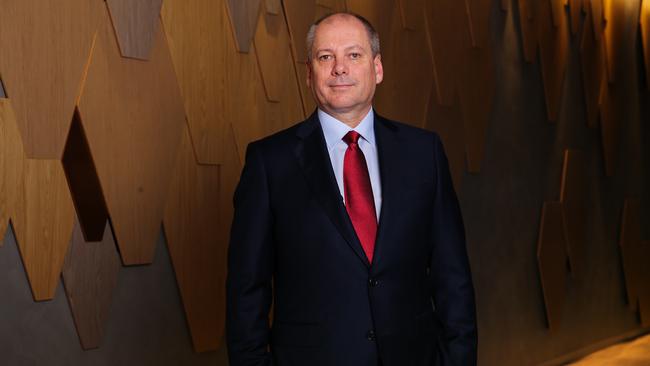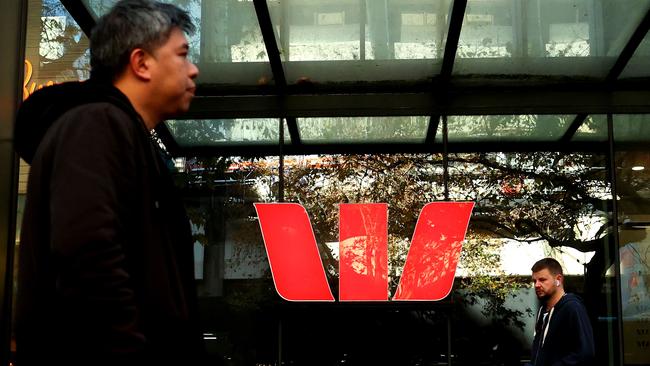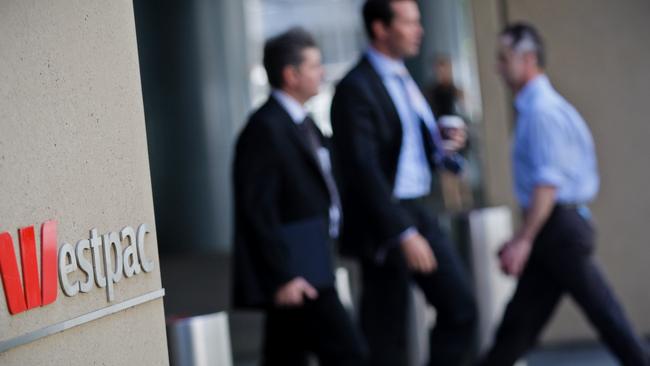
But Westpac chief executive Peter King has become the highest-profile casualty so far of runaway inflation.
He staked much market credibility on meeting his original target of an $8bn cost base by financial year 2024 even as inflation started moving this year.
But on Monday he finally yielded and offered a new target of $8.6bn. This new cost line is an increase of 7.5 per cent over the original estimate, which happens to be a touch ahead of the annual rate of inflation.

King says the target had to shift due to inflation through the economy, the war for talent as well as additional costly regulator demands, particularly in New Zealand.
“The market was expecting us to go up a little bit (in cost target) given the conditions,” King says in an interview.
But as a former chief financial officer he should have known the perils of underdelivering on his own numbers.
Big investors marked Westpac shares down hard – nearly 4 per cent on Monday – as they adjusted for the cumulative impact of Westpac having a slightly higher-than-expected cost base in the years ahead. But the selldown is partly of Westpac’s own doing with the $8bn figure repeatedly being the benchmark the bank set for itself even as recent as July.
Cost out
King’s was speaking as Westpac posted a 1 per cent drop in full year cash earnings to $5.276bn. The bank’s headline result met expectations with second-half earnings hit by the writedown in the sale of Westpac’s life insurance business. Although there were promising signs of revenue lift during the September half as higher rates boosted profit margins.
Showing why costs are an issue, Westpac’s expense-to-income ratio, a measure of efficiency, came in at 56.8 per cent, which while down from 63 per cent a year ago, is still ahead of ANZ (52 per cent) and Commonwealth Bank (46.7 per cent).
Since King took over Westpac three years ago he has pulled nearly $2.1bn in annualised costs out of the business, with another $1.1bn to come by 2024.
The cost-out program has no doubt been a major exercise with some concern that too much is underway while the bank needs to get its cultural and risk overhaul finalised after an Austrac anti-money laundering legal action caught it napping. The program also comes as other banks from ANZ to NAB are doubling down on their digital spend.

The big challenge for King is to sell to investors a vision of what Westpac wants to be at the other end of a massive cost-out push. It needs to be more than a lower-cost Westpac of old.
King says Westpac will be a “simple bank” which will be more efficient with every dollar invested. And do this he needs to unwind years of acquisitions and reconfigure the underlying processes. He also needs to bring Westpac’s vast workforce along with him.
“We’ve got to exit businesses. We’ve got to be much more cost productive in our businesses in all aspects,” he says.
Seven businesses worth $3bn have been sold including life insurance, while the drawn out sale of the wealth platform still unfolding. Westpac’s Pacific Islands business is still being held for sale.
All kinds of expenses are being examined from floorplates at Sydney headquarters, the number of branches, staffing levels and there is a race to move most parts of the business on to a digital platform.
He points out the branch closures include a commitment to “co-locations” where so far 27 St George or Westpac branded branches have been rolled into one. The pace of these branch mergers will increase over coming years.
Some of the re-engineering includes cutting 150 products while more than 400 paper forms have now moved online which means less labour to process them.
King insists digital conversion is gathering pace and points to the launch this year of a full online mortgage offering, which beat some rivals to the punch.
Westpac recently upgraded its app for retail and business customers which King says is a lift in speed and capability. This has already made his bankers more productive by settling more loans.
Still, as the nation’s second biggest bank Westpac is playing it safe and behaving more like a credit union as it chases an outsized share of the mortgage market versus business lending. This could be a headache going into a housing downturn, with Westpac tipping the cash rate to climb to as high as 4 per cent and unemployment to push 4.5 per cent.
Westpac’s exposure to mortgages has now passed the 70 per cent of its total lending book, up from around 60 per cent five years ago, and has come at the expense of business and unsecured lending.
Clues to where King wants to take his bank were given as he put some detail around the bank’s interest in loss-making payments platform Tyro. While he declined to be drawn on how close he is in terms of making a buyout offer for the $800m-plus business, King says investing in the core infrastructure of payments was one area where the bank can deepen its offerings to customers. This ranges from real time payments to direct debits. Currently it is piloting business customers using their phones for merchant payments.
Middle management
The results coincided with the release of the latest scorecard into Westpac’s two-year effort to boost risk management and governance in the wake of the Austrac legal action. Here independent monitor Promontory is keeping track but has raised concerns around reform fatigue, particularly through Westpac’s middle management.
Promontory has also noted pressures on resourcing and capacity constraints across some of the complexity of the programs. Progress has been made on staff changing their mindset around risk culture but challenges remain in ensuring a uniform introduction of the three lines of defence model, particularly the lines of accountability in the defence model.
“Communications and ongoing feedback will also play a key role in addressing the risks relating to change fatigue and resourcing, particularly for the middle management cohort who are increasingly relied upon to drive execution,” Promontory said.
King acknowledges there is “a lot of change” going on through the company and reform fatigue is a program risk called out that needs to be managed. He says important progress is being made, with the program on track.

Westpac’s take on the economy is consistent with how its rivals including ANZ and CBA are positioned ahead of the coming slowdown as rising cash rates start to bite. NAB, which has a higher exposure to business customers, delivers its results on Wednesday.
Right now King is seeing next to no signs of mortgage stress in its portfolio and even missed payments on unsecured loans – the ones most sensitive to rising interest rates continued to fall.
King says his bank is bracing for some rise in impairment charges, but the lag effect of interest rate rises won’t start showing up until the second half of 2023.
The economy is still strong, King says, although he is preparing for a modest rise in unemployment and falls in housing prices.
He says business customers are positive about Christmas and are looking to add more staff, which is a healthy forward indicator.
When the slowdown does eventuate the effects will be “uneven” across the economy.
johnstone@theaustralian.com.au





At the current rate Westpac is closing one of its branches somewhere in Australia every three days. This highlights the urgency of one of the nation’s biggest corporate cost-cutting programs underway with billions of dollars slated to come out of the banking major over three years.